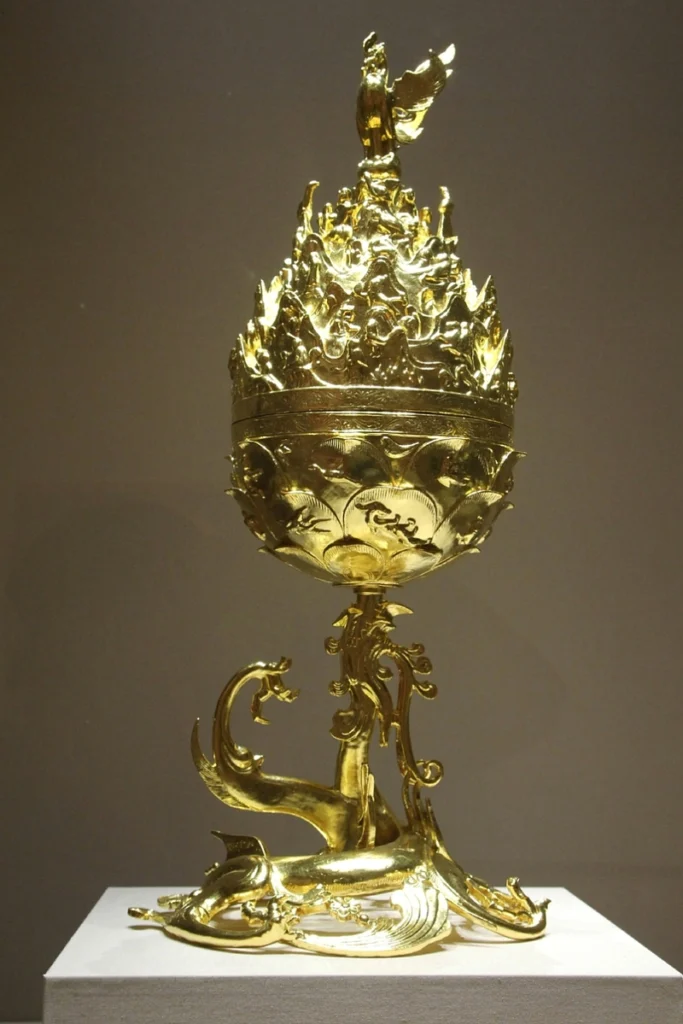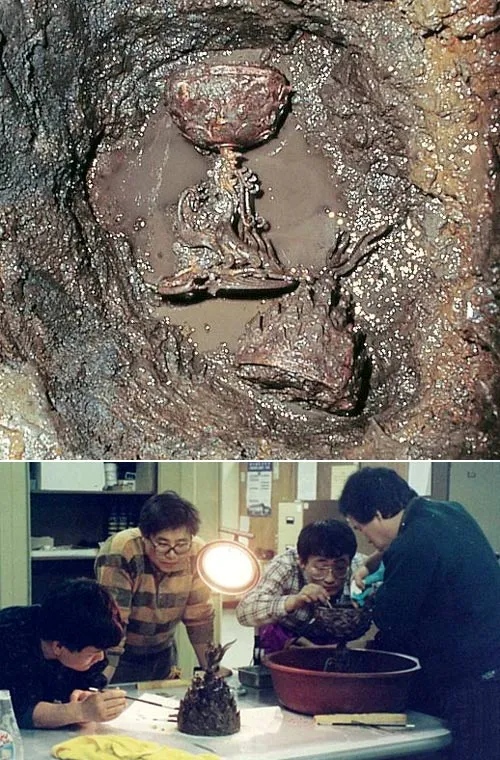The Baekje Gilt-Bronze Incense Burner, a treasured pinnacle of Baekje culture, was discovered by chance in 1993 during a construction project. Its exceptional preservation and craftsmanship have sparked debates about its origins and the circumstances of its burial. Today, it remains a celebrated national treasure, never exhibited abroad, and admired for its beauty and historical significance.
The Debate over Korea’s Greatest National Treasure


When it comes to selecting the greatest masterpiece among Korea’s national treasures, experts often have differing opinions. However, one artifact that consistently ranks among the top is the Baekje Gilt-Bronze Incense Burner. Renowned for its exquisite craftsmanship and unparalleled artistry, this incense burner is considered the pinnacle of Baekje culture. While its exact date of creation remains uncertain, scholars estimate it was made between the late 6th and early 7th centuries, a period when Baekje regained stability and cultural flourishing after the turmoil of losing the Han River basin to Goguryeo.
A Serendipitous Discovery

The discovery of the Baekje Gilt-Bronze Incense Burner was a fortunate accident. On December 12, 1993, during the construction of a parking lot for tourists visiting the Neungsan-ri Tumuli, the artifact was unearthed. Given that the area is known for yielding relics, the parking lot location was chosen as it was believed to be the least likely site to contain any significant artifacts. Despite a prior excavation that yielded no finds, one persistent team member had an unshakable feeling and convinced a local official to allow one final dig, leading to the discovery of this magnificent incense burner.
A Remarkable State of Preservation
The Baekje Gilt-Bronze Incense Burner was found in near-perfect condition, preserved for approximately 1,300 years underground. The surrounding clay created a vacuum seal that prevented any rusting. The significance of this discovery was such that one scholar likened it to the entire excavation of the Tomb of King Muryeong. It is believed that during Baekje’s fall to the Tang dynasty, an anonymous Baekje citizen risked their life to bury this treasure in the mud for protection. The burner was gilded using the mercury amalgam method, a technique that predates similar Western methods by a thousand years.
Controversy and Consensus in the Korean Community
The Baekje Gilt-Bronze Incense Burner is a well-known artifact among Koreans, yet its discovery story sparked debate when shared on Korean online communities like MBLPARK. Some doubted the tale of an anonymous Baekje individual intentionally burying the incense burner for protection. However, evidence of textile fragments found with the burner suggests it was carefully wrapped and buried, supporting the intentional concealment theory.
Debates on Its Origin
Another point of contention is the burner’s origin. Early Chinese scholars speculated that it might have been imported from China, a theory some Chinese-Koreans still support. However, this claim lost credibility after the discovery of a forge site believed to be where the incense burner was made. This finding quelled the debate on MLBPARK, affirming the burner’s Baekje origins.
Celebrating a National Treasure
Many MLBPARK members who have visited the Buyeo National Museum to view the Baekje Gilt-Bronze Incense Burner in person praise its beauty and aesthetic sophistication. Some even brought foreign friends to admire this cultural heritage. Despite its fame, the techniques used to create the incense burner have been lost over time, a point of regret for many.
A Treasure That Stays Home
Although the Baekje Gilt-Bronze Incense Burner is widely recognized in Korea, its fascinating backstory has reignited national interest. This invaluable treasure has never been exhibited abroad, reflecting its immense cultural significance to Koreans. Those who wish to see it must visit Korea, where it remains a source of national pride.
Here’s a link to MLBPARK.I appreciate you taking the time to read this post. Please share your thoughts in the comments!


You have to go to a city called Buyeo, not Seoul, to see it. Even if I visit Korea, it might be hard to go there.